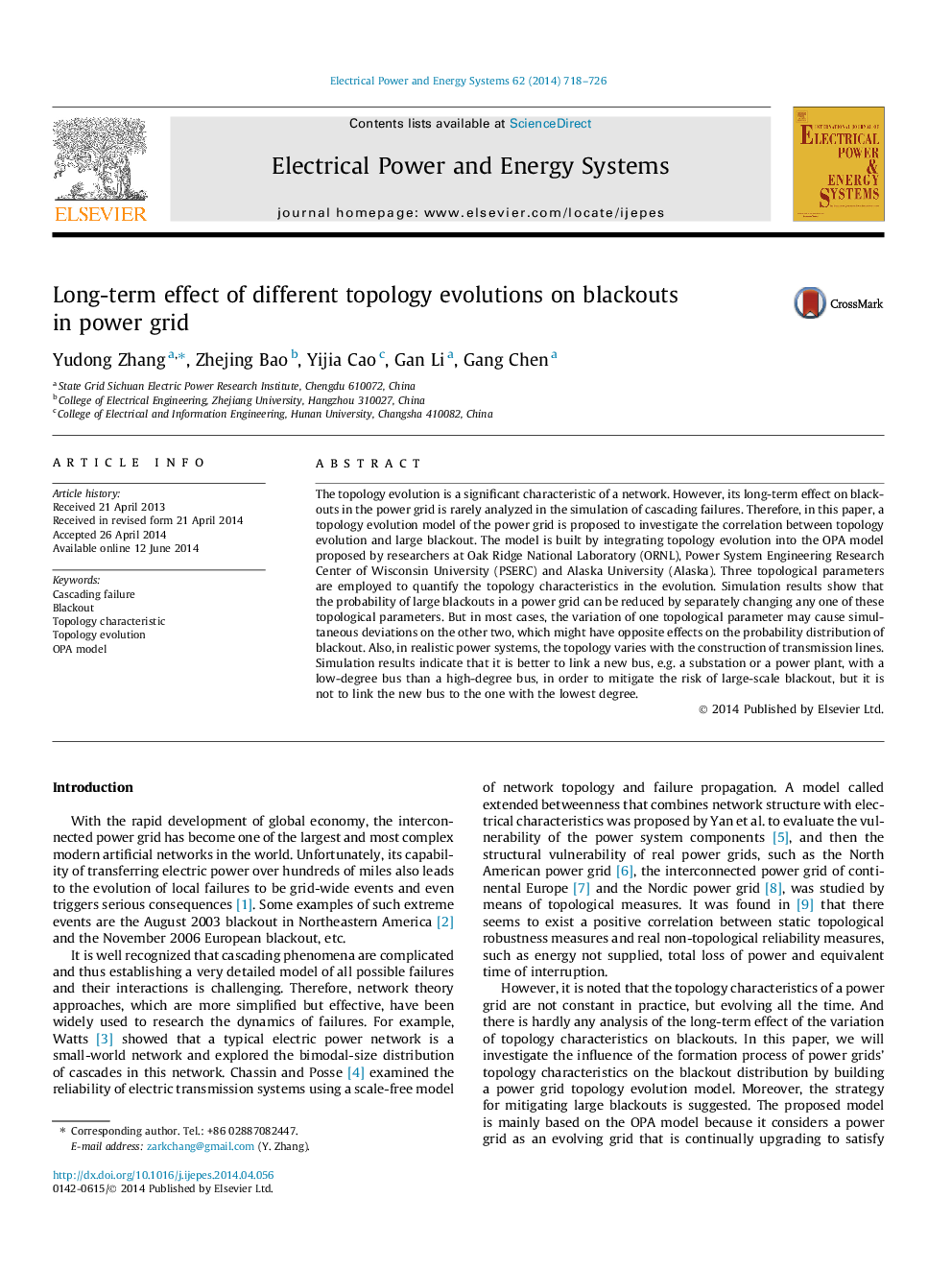| Article ID | Journal | Published Year | Pages | File Type |
|---|---|---|---|---|
| 398383 | International Journal of Electrical Power & Energy Systems | 2014 | 9 Pages |
•A power grid model is built by integrating topology evolution with the OPA model.•Blackouts can be mitigated by separately changing any one of topology parameters.•Changes of topology characteristics are not mutually independent, but coupled.•Linking a new bus to a low-degree one is a better choice to mitigate blackouts.
The topology evolution is a significant characteristic of a network. However, its long-term effect on blackouts in the power grid is rarely analyzed in the simulation of cascading failures. Therefore, in this paper, a topology evolution model of the power grid is proposed to investigate the correlation between topology evolution and large blackout. The model is built by integrating topology evolution into the OPA model proposed by researchers at Oak Ridge National Laboratory (ORNL), Power System Engineering Research Center of Wisconsin University (PSERC) and Alaska University (Alaska). Three topological parameters are employed to quantify the topology characteristics in the evolution. Simulation results show that the probability of large blackouts in a power grid can be reduced by separately changing any one of these topological parameters. But in most cases, the variation of one topological parameter may cause simultaneous deviations on the other two, which might have opposite effects on the probability distribution of blackout. Also, in realistic power systems, the topology varies with the construction of transmission lines. Simulation results indicate that it is better to link a new bus, e.g. a substation or a power plant, with a low-degree bus than a high-degree bus, in order to mitigate the risk of large-scale blackout, but it is not to link the new bus to the one with the lowest degree.
